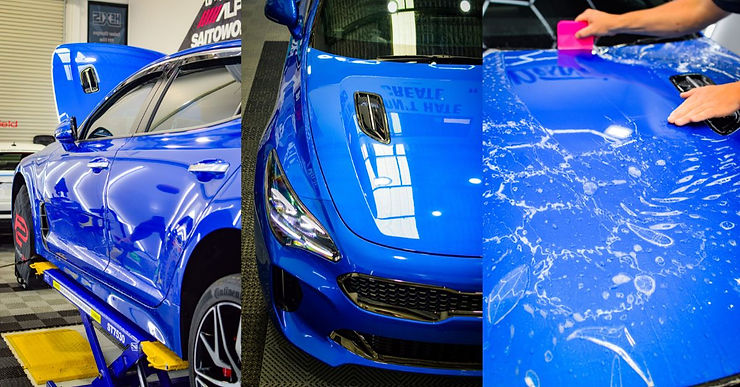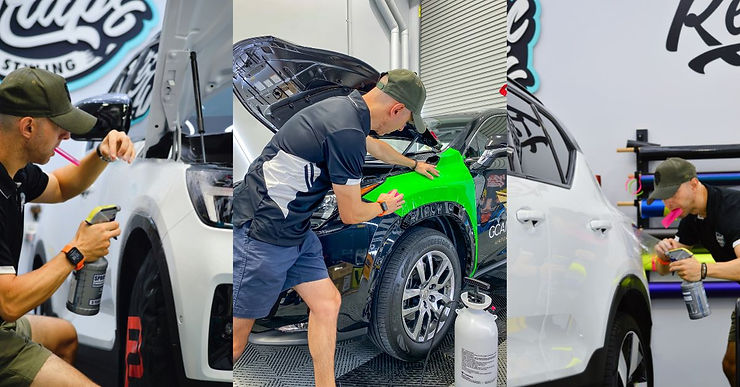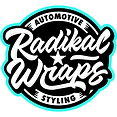When it comes to protecting your vehicle’s paintwork, Paint Protection Film (PPF) is one of the best options available. But with so many different installation methods, how do you know which one to choose? In this post, we’ll discuss the benefits of using PPF templates or bulk installation and why choosing the right installer for the job is essential.

PPF offers a transparent layer of protection against environmental contaminants, UV rays, and minor scratches and chips. However, the key to a successful PPF installation lies not only in the quality of the material but also in the installer’s skill. Here’s what you need to know about choosing an installer for your next PPF installation.
“Protect your investment and choose quality over unknown brands. Don’t let a cheap and unreliable paint protection film ruin the appearance of your vehicle in the long run. Invest in a trusted and proven product for the ultimate protection and peace of mind.”
Three reasons to consider before getting your vehicle protected.
- Choosing the Right Installer: One of the most critical factors in getting a good PPF installation is choosing the right installer. Look for an installer who understands PPF, can demonstrate the film characteristics, and guide you through the process, preferably one who has received training and certification from a reputable PPF manufacturer.
- Template Cutting and Weeding: Many PPF installers use templates to help ensure an accurate and efficient installation. Templates are pre-cut pieces of PPF that are designed to fit specific areas of a vehicle’s paintwork. Template cutting and weeding are the processes of removing the excess PPF material cut by a plotter around the template and preparing it for installation. This process is critical as the wrong technique and approach can seriously impact the template’s shape and form. Weeding takes time and is a delicate task that most people take lightly.
- Choosing the Right Material: When it comes to PPF materials, not all are created equal. While various options are available, choosing a high-quality brand that offers both durability and clarity is essential. Brands like Stek, Dyno, Xpel, and Suntek are known for their high-quality PPF materials that offer excellent protection against environmental factors like UV rays and rock chips. It’s important to avoid cheaper alternatives that may not offer the same level of protection or durability.
What is the Vehicle Preparation before Application?
PPF installation involves thoroughly cleaning the vehicle’s paintwork, clay-bar wash and removing iron contamination from the paint. Once this is done, the installer will prepare the PPF material to carefully remove it from the backing paper and transfer it to the vehicle. The installation should be done in a clean, temperature-controlled environment between 21-24°C to prevent contamination and ensure the best possible adhesion.
Templates Vs Bulk Installs
When it comes to installing PPF on a vehicle, there are two main methods: bulk installation and template installation. Bulk installation involves using a large sheet of PPF to cover the entire surface of the vehicle, while template installation involves using pre-cut pieces of PPF that are applied to specific areas of the vehicle.
While bulk installation may seem faster and more efficient, template installation offers several benefits. One of the main advantages of using templates is that it allows for more precise and accurate vehicle coverage. This is because the templates are designed specifically for each individual make and model of car, ensuring a perfect fit every time. The installer can manipulate the templates on the cutting software and expand them for added coverage where required before the material is cut by the plotter. This is done by a “test-fit” prior with a different material before the Clear Bra is cut.

Using templates also requires a high level of skill and craftsmanship from the installer. The templates must be cut and weeded using a plotter, a specialized tool that precisely cuts the PPF. This requires a trained and experienced installer who understands the intricacies of the process.
In addition to precision and craftsmanship, templates allow for a more efficient and streamlined installation process. The installer can focus on specific areas of the vehicle rather than covering the entire surface in one go. This can help reduce the contamination risk and ensure a higher-quality installation.
One concern that arises with bulk cutting is the potential for the knife to cut into the paint underneath the film. Bulk cutting involves using a knife to trim the PPF to fit the exact shape of the vehicle rather than using pre-cut templates. This method requires a high level of skill and precision to ensure that the PPF is cut precisely and fits the curves and contours of the vehicle perfectly. However, if the knife slips or is used improperly, it can cut into the paint underneath the film, causing damage and potentially compromising the effectiveness of the PPF.
Ultimately, the choice between templates and bulk cutting comes down to the skill and experience of the installer. A skilled and experienced installer can use either method effectively, but less experienced installers may be better suited to using pre-cut templates to minimize the risk of damaging the paint.
When choosing an installer for PPF, it’s essential to consider their level of experience and training with both methods, as well as their choice of film brand and their attention to detail. Ultimately, the goal is to protect the vehicle’s paint from damage and keep it looking great for years.
